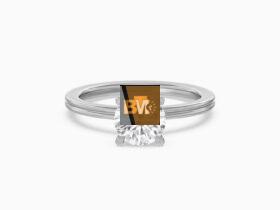Dermal fillers are transforming the way we approach ageing. They offer a quick, non-surgical solution to enhance your appearance and confidence. The comprehensive guide will cover everything you need about dermal fillers, from the basics to the benefits.
What Are Dermal Fillers?
Dermal fillers are injectable substances used to fill in wrinkles, restore volume, and improve facial contours. They are popular for their ability to provide immediate results with minimal downtime. Unlike Botox, which relaxes muscles to reduce wrinkles, dermal fillers add volume to the skin.
Types of Dermal Fillers
Various types of dermal fillers are available, each designed for specific purposes:
- Hyaluronic Acid (HA) Fillers: These are the most common types. HA is a natural substance found in the skin, helping to keep it hydrated and plump. Popular HA fillers include Juvederm and Restylane.
- Calcium Hydroxylapatite: The filler, a mineral-like compound found in bones, is found in Radiesse and is used for deeper wrinkles and facial contouring.
- Poly-L-Lactic Acid: Known as Sculptra, this filler stimulates collagen production. It’s often used for deeper wrinkles and to restore facial volume.
- Polymethylmethacrylate (PMMA): Bellafill is a semi-permanent filler that uses PMMA microspheres to provide long-lasting results.
Benefits of Dermal Fillers
Dermal fillers offer numerous benefits:
- Immediate Results: Noticeable changes right after the procedure.
- Minimal Downtime: Most people return to their regular activities immediately.
- Natural Look: When done correctly, fillers provide a subtle and natural enhancement.
- Versatility: Can be used for various concerns, from thin lips to severe facial wrinkles.
Common Uses for Dermal Fillers
Dermal fillers are incredibly versatile. Here are some common uses:
- Lip Enhancement: Fillers will give you fuller, more defined lips.
- Smooth Wrinkles: Reduce the appearance of facial wrinkles and fine lines.
- Restore Volume: Fillers will restore lost volume in areas like the cheeks and under the eyes.
- Improve Contours: Enhance the shape and contours of your face.
Understanding Dermal Filler Procedures
Dermal filler procedures have gained immense popularity for their effectiveness and convenience. They are widely used to enhance facial features and combat signs of ageing. Understanding the intricacies of these procedures will help you make informed decisions.
Hyaluronic Acid: The Key Ingredient
Hyaluronic acid is the star component in many dermal filler products. The naturally occurring substance in our skin helps retain moisture, giving the skin a plump and hydrated look. Hyaluronic acid fillers, such as Juvederm and Restylane, are favoured for their natural results and safety profile.
The Procedure: What to Expect
Dermal filler procedures are straightforward but require a skilled hand. Here’s a step-by-step overview:
- Consultation: Discuss your goals with a qualified provider. They will evaluate your facial anatomy and recommend the appropriate filler.
- Preparation: The treatment area is cleaned, and a numbing agent is applied to minimize discomfort.
- Dermal Filler Injections: The provider will inject dermal fillers into targeted areas. Each injection site is carefully selected to achieve the desired outcome.
- Post-Procedure Care: Mild swelling or bruising at the injection site is common. Follow the aftercare instructions provided by your healthcare professional to ensure optimal results.
Types of Dermal Fillers
Different fillers serve different purposes. Here are the most common types:
- Hyaluronic Acid Fillers: Ideal for smoothing wrinkles and adding volume to lips and cheeks.
- Calcium Hydroxylapatite: Used for deeper wrinkles and enhancing facial contours.
- Poly-L-Lactic Acid: Stimulates collagen production, ideal for restoring volume.
- Polymethylmethacrylate (PMMA): Semi-permanent fillers are used for deeper wrinkles and recessed scars.
Applications of Dermal Fillers
Dermal fillers can address a variety of aesthetic concerns:
- Nasolabial Folds: Fillers smooth these lines from nose to mouth.
- Smile Lines: Fillers will reduce the appearance of these lines.
- Lip Enhancement: Achieve fuller, more defined lips.
- Acne Scars: Fillers will help reduce the appearance of acne scars.
- Sagging Skin: Fillers provide support and lift to sagging areas.
Potential Side Effects and Risks
While dermal fillers are generally safe, they come with potential side effects and risks:
- Swelling and Bruising: Common but temporary.
- Lumps and Bumps: May occur if the filler is not evenly distributed.
- Allergic Reactions: Rare but possible.
- Skin Necrosis: Very rare but serious if blood supply is compromised.
Choosing the Right Filler
Selecting the right filler depends on various factors:
- Desired Outcome: Different fillers are suited for different purposes.
- Facial Anatomy: Your provider will consider your unique facial structure.
- Longevity: Some fillers last longer than others. HA fillers typically last 6-12 months, while semi-permanent fillers will last several years.
Maintenance and Aftercare
Proper aftercare ensures the best results:
- Avoid Touching the Area: Helps prevent infection and displacement of the filler.
- Stay Hydrated: Drinking plenty of water helps maintain the filler’s effect.
- Follow Up: Regular follow-up appointments with your provider are crucial for maintaining results.
Cost of Dermal Fillers
The cost of dermal fillers varies based on several factors:
- Type of Filler: Different fillers have different price points.
- Provider’s Expertise: Experienced providers may charge more.
- Geographic Location: Prices will vary significantly by location.
Choosing a Provider
Selecting a qualified provider is crucial for safe and effective results. Look for a board-certified cosmetic surgeon or dermatologist with experience in dermal filler treatments. Their expertise ensures the correct placement of filler substances, minimizing risks and maximizing benefits.
The Takeaway
Dermal fillers offer a versatile and effective solution for enhancing facial features and combating signs of ageing. Whether you want to smooth wrinkles, restore volume, or improve facial contours, dermal filler treatments provide immediate, natural-looking results with minimal downtime. Consult a qualified professional to ensure the best outcomes and minimize potential risks.
Frequently Asked Questions
How long does a dermal filler procedure take?
A typical dermal filler procedure takes about 30 minutes, depending on the number of injection sites.
What should I avoid after getting dermal fillers?
Avoid strenuous exercise, excessive sun exposure, and touching the treated area for at least 24 hours after receiving dermal filler injections.
Are dermal fillers painful?
Injectable dermal fillers often contain a local anaesthetic to minimize discomfort. Additionally, your provider may use a numbing agent before the procedure.
Can I combine dermal fillers with other treatments?
Dermal filler procedures may be combined with treatments like Botox for a more comprehensive facial rejuvenation. The approach will enhance the overall results.
What are the benefits of hyaluronic acid fillers?
Hyaluronic acid fillers provide natural-looking results, are safe, and will be reversed if necessary. These soft tissue fillers are popular for their versatility and effectiveness.






Leave a Reply